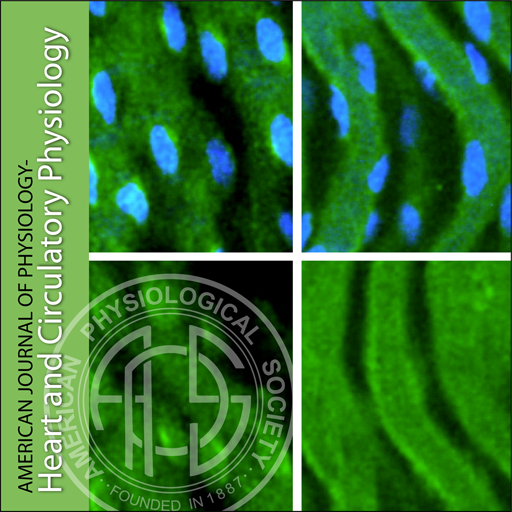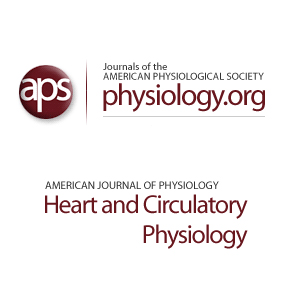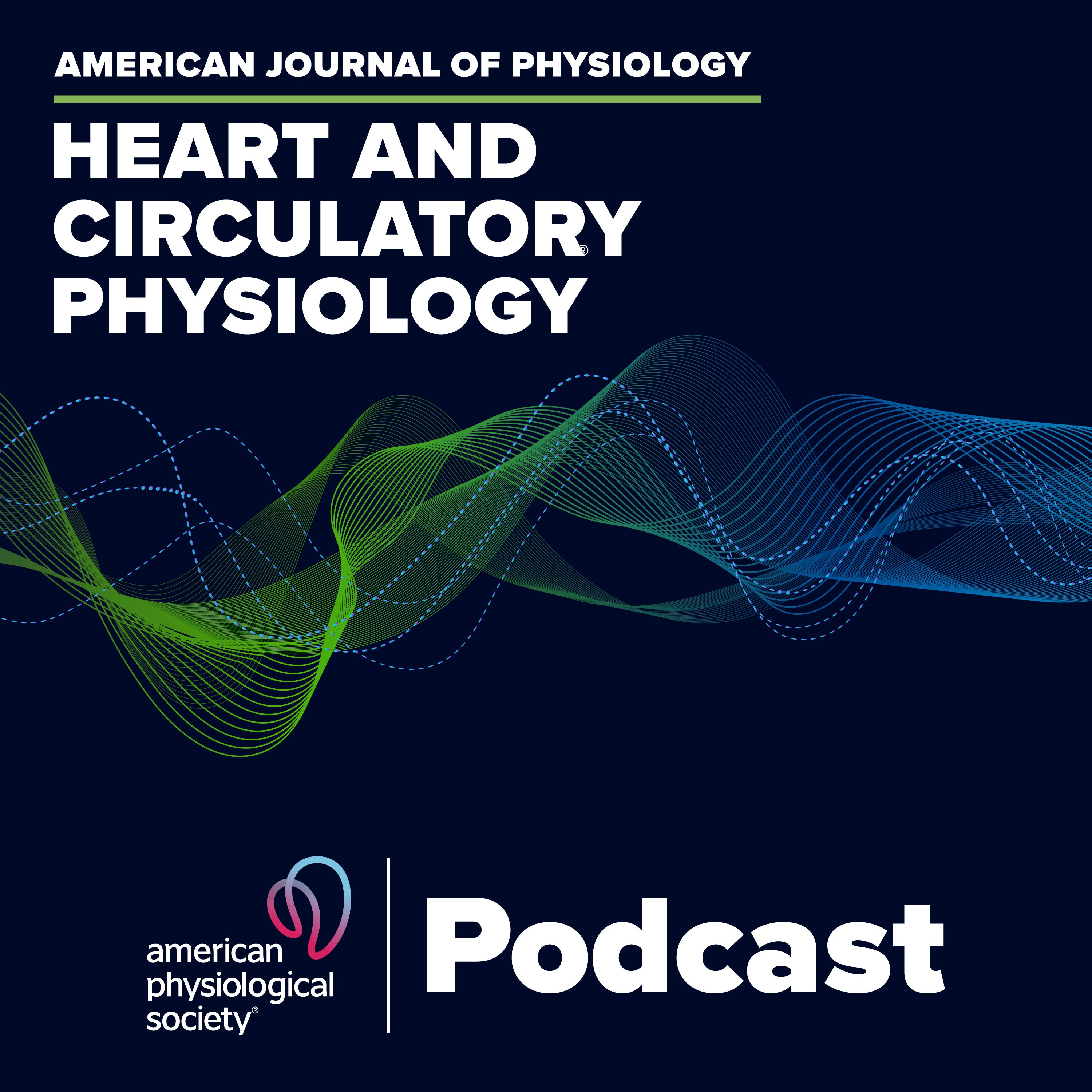Episodes

Friday May 31, 2013
Telemetry, Hibernating Myocardium and Sudden Death
Friday May 31, 2013
Friday May 31, 2013
How can we identify who is at risk for sudden cardiac death, when patients have no history of cardiac ischemia and no signs of coronary occlusion? Authors of the recent work by Pizzuto et al may have found answers in their innovative new animal model study. Associate Editor Fabio Recchia interviews senior author John Canty (University of Buffalo) and leading expert Edward McFalls (VA Medical Center, University of Minnesota) about the intricate study performed by Canty and colleagues in chronically instrumented pigs, which provides unique insights into telemetrically-measured left ventricular pressure changes immediately preceding sudden cardiac death. How will the lessons learned here translate to the clinical prevention of sudden cardiac death in humans?
Matthew F. Pizzuto, Gen Suzuki, Michael D Banas, Brendan M. Heavey, James A Fallavollita, and John M. Canty Dissociation of Hemodynamic and Electrocardiographic Indices of Myocardial Ischemia in Pigs with Hibernating Myocardium and Sudden Cardiac Death Am J Physiol Heart Circ Physiol, published online April 12, 2013, doi: 10.1152/ajpheart.00166.2013.

Wednesday May 15, 2013
Mitochondrial Uncoupling and Cardioprotection
Wednesday May 15, 2013
Wednesday May 15, 2013
What do we know about the relationship between uncoupling proteins (UCP) and myocardial energetics, as well as UCP and ROS production? This podcast explores these topics and more in Associate Editor Gary Lopaschuk’s interview with lead author Cevher Ozcan (University at Buffalo) and expert Hossein Ardehali (Northwestern University) on the work by Ozcan and her colleagues. What is the role of UCP3 in ischemia reperfusion injury, arrhythmia, and preconditioning? What human diseases implicate mutations in UCP3 and other uncoupling proteins in their pathology? Listen to learn more.
Cevher Ozcan, Monica Palmeri, Tamas L. Horvath, Kerry S. Russell, and Raymond R. Russell III Role of uncoupling protein 3 in ischemia-reperfusion injury, arrhythmias, and preconditioning Am J Physiol Heart Circ Physiol, published online March 1, 2013, doi: 10.1152/ajpheart.00592.2012.

Tuesday May 07, 2013
PART ONE Metabolism of Ketone Bodies in Health and Disease
Tuesday May 07, 2013
Tuesday May 07, 2013
How does the gut microbiome impact on myocardial energy substrate metabolism? In part one of our two-part podcast on the Review article by Cotter et al, Associate Editor Christine Des Rosiers interviews lead author Peter Crawford (Washington University in St. Louis) and renowned metabolism expert Heinrich Taegtmeyer (University of Texas Medical School). Building on Crawford and colleagues' seminal work published in 2009 on ketone body metabolism using a unique experimental mouse model, which is germ free, we discuss the broad topic of integrated intermediary metabolism. What is the link between the gut microbiome, ketone body metabolism and cardiac physiology? Listen and learn.
David G. Cotter, Rebecca C. Schugar, and Peter A. Crawford Ketone body metabolism and cardiovascular disease Am J Physiol Heart Circ Physiol, published online February 8, 2013, doi: 10.1152/ajpheart.00646.2012.

Tuesday May 07, 2013
PART TWO Metabolism of Ketone Bodies in Health and Disease
Tuesday May 07, 2013
Tuesday May 07, 2013
What happens when myocardium are exposed to chronic states of ketosis? In part two of our podcast on the Review article by Cotter et al, Associate Editor Christine Des Rosiers continues the discussion with lead author Peter Crawford (Washington University in St. Louis) and renowned metabolism expert Heinrich Taegtmeyer (University of Texas Medical School) about the adaptation of the myocardium to chronic ketosis. We explore how the heart protects itself from an overabundance of ketone bodies by down regulating key regulatory enzymes in ketone body metabolism. What new experimental models are being developed to study the targeted inactivation of the SCOT enzyme, which may help us understand how the heart protects against fuel toxicity? Listen now.
David G. Cotter, Rebecca C. Schugar, and Peter A. Crawford Ketone body metabolism and cardiovascular disease Am J Physiol Heart Circ Physiol, published online February 8, 2013, doi: 10.1152/ajpheart.00646.2012.

Monday May 06, 2013
Mitochondrial Function in the Ischemic Human Heart
Monday May 06, 2013
Monday May 06, 2013
Assessment of cardiac mitochondrial function in patients with chronic ischemic heart disease is rarely undertaken, but ultimately these measurements provide the final word in our understanding of the pathology of myocardial bioenergetics. In this new podcast, Editor in Chief William Stanley interviews lead author Flemming Dela (University of Copenhagen) and expert Ethan Anderson (East Carolina University) about the clinical studies by Stride et al. Listen as we gain new insights into the challenges of obtaining samples from human ventricle tissue, and discuss the experimental hurdles faced by researchers in this field. Will the next steps uncover new ways to manipulate mitochondria to lessen ischemia injury? Listen and find out.
Nis Stride, Steen Larsen, Martin Hey-Mogensen, Christina Neigaard Hansen, Clara Prats, Daniel Steinbrüchel, Lars Køber, and Flemming Dela Impaired Mitochondrial Function in Chronically Ischemic Human Heart Am J Physiol Heart Circ Physiol, published online March 29, 2013, doi: 10.1152/ajpheart.00991.2012.

Thursday May 02, 2013
Atrial and Sinus Node Arrhythmias in Ankyrin-B Syndrome
Thursday May 02, 2013
Thursday May 02, 2013
How can one monogenic defect—a mutation of the structural protein ankyrin-B—give rise to multiple disparate phenotypes across the heart? The new work by Wolf et al examines this very question. Associate Editor Igor Efimov interviews lead author Thomas Hund (Ohio State University) and expert Natalia Trayanova (Johns Hopkins University) in our latest podcast, which explores the multi-scale computer model created by Hund and his colleagues to study ankyrin-B mutation and its effect on sinus node dysfunction. Does Hund make the case for using an integrative, rather than reductionist, approach to studying cardiac arrhythmias? Listen and learn.
Roseanne M. Wolf, Patric Glynn, Seyed Hashemi, Keyan Zarei, Colleen C. Mitchell, Mark E. Anderson, Peter J. Mohler, and Thomas J. Hund Atrial Fibrillation and Sinus Node Dysfunction in Human Ankyrin-B Syndrome: A Computational Analysis Am J Physiol Heart Circ Physiol, published online February 22, 2013, doi: 10.1152/ajpheart.00734.2012.

Friday Apr 26, 2013
Liposomal Erythropoietin Protects the Heart
Friday Apr 26, 2013
Friday Apr 26, 2013
Reducing infarct size to prevent ischemic heart failure in patients with acute myocardial infarction is a known challenge for clinical cardiologists, and few drugs meet this challenge. In our new podcast Associate Editor Masafumi Kitakaze interviews lead author Shinya Minatoguchi (Gifu University Graduate School of Medicine, Gifu, Japan) and expert Tetsuji Miura (Sapporo Medical University School of Medicine, Sapporo, Japan) about the innovative new work by Yamada et al which used liposomal erythropoietin therapy to reduce infarct size in a rabbit heart model. Can this relatively non-invasive drug delivery method become an effective way to reduce infarct size in acute MI human patients? Listen now.
Yoshihisa Yamada, Hiroyuki Kobayashi, Masamitsu Iwasa, Shohei Sumi, Hiroaki Ushikoshi, Takuma Aoyama,
Kazuhiko Nishigaki, Genzou Takemura, Takako Fujiwara, Hisayoshi Fujiwara, Makoto Kiso, and Shinya Minatoguchi Postinfarct active cardiac-targeted delivery of erythropoietin by liposomes with sialyl Lewis X repairs infarcted myocardium in rabbits Am J Physiol Heart Circ Physiol, published online February 15, 2013, doi: 10.1152/ajpheart.00707.2012.

Friday Apr 26, 2013
JAPANESE VERSION: Liposomal Erythropoietin Protects the Heart
Friday Apr 26, 2013
Friday Apr 26, 2013
NEW! In this JAPANESE language podcast, Associate Editor Masafumi Kitakaze interviews lead author Shinya Minatoguchi (Gifu University Graduate School of Medicine, Gifu, Japan) and expert Tetsuji Miura (Sapporo Medical University School of Medicine, Sapporo, Japan) about the innovative new work by Yamada et al which used liposomal erythropoietin therapy to reduce infarct size in a rabbit heart model. Can this relatively non-invasive drug delivery method become an effective way to reduce infarct size in acute MI human patients? Listen now.
Yoshihisa Yamada, Hiroyuki Kobayashi, Masamitsu Iwasa, Shohei Sumi, Hiroaki Ushikoshi, Takuma Aoyama,
Kazuhiko Nishigaki, Genzou Takemura, Takako Fujiwara, Hisayoshi Fujiwara, Makoto Kiso, and Shinya Minatoguchi Postinfarct active cardiac-targeted delivery of erythropoietin by liposomes with sialyl Lewis X repairs infarcted myocardium in rabbits Am J Physiol Heart Circ Physiol, published online February 15, 2013, doi: 10.1152/ajpheart.00707.2012.

Thursday Apr 25, 2013
DPP-IV Inhibitor Improves Survival in Murine Heart Failure
Thursday Apr 25, 2013
Thursday Apr 25, 2013
Can diabetes treatments also protect the heart? In our latest podcast we explore the work by Takahashi et al, which examined what a DPP-IV inhibitors will do at the level of the heart. Associate Editor Gary Lopaschuk interviews lead author Masanori Asakura (National Cerebral and Cardiovascular Center, Osaka, Japan) and expert Zam Kassiri (University of Alberta) about this exciting new work which pulls together aspects of metabolism, heart failure, anti-diabetic agents and cardioprotection. Listen and learn more.
Ayako Takahashi, Masanori Asakura, Shin Ito, Kyung-Duk Min, Kazuhiro Shindo, Yi Yan, Yulin Liao, Satoru Yamazaki, Shoji Sanada, Yoshihiro Asano, Hatsue Ishibashi-Ueda, Seiji Takashima, Tetsuo Minamino, Hiroshi Asanuma, Naoki Mochizuki, and Masafumi Kitakaze Dipeptidyl-Peptidase IV Inhibition Improves Pathophysiology of Heart Failure and Increases Survival Rate in Pressure-Overloaded Mice Am J Physiol Heart Circ Physiol, published online March 15, 2013, doi: 10.1152/ajpheart.00454.2012.

Thursday Mar 28, 2013
Coronary Vasoconstriction in Heart Failure Impairs Contractility
Thursday Mar 28, 2013
Thursday Mar 28, 2013
Can an abnormal metaboreflex activation causing coronary constriction help to explain the reduced ability of the heart to increase cardiac performance in heart failure patients during exercise? While the metaboreflex has been studied for decades, new research by Coutsos et al in a chronic dog model of heart failure gives fresh insights on how ventricular function is improved by relieving vasoconstriction and thus enhancing coronary blood flow. Associate Editor Fabio Recchia interviews lead author Donal O’Leary (Wayne State University) and expert Antonio Crisafulli (University of Cagliari, Italy) about this interesting work and its potential clinical impact on heart failure patients.
Matthew Coutsos, Javier A. Sala-Mercado, Masashi Ichinose, ZhenHua Li, Elizabeth J. Dawe, and Donal S. O'Leary Muscle Metaboreflex-Induced Coronary Vasoconstriction Limits Ventricular Contractility During Dynamic Exercise in Heart Failure Am J Physiol Heart Circ Physiol, published online January 25, 2013, doi: 10.1152/ajpheart.00879.2012.

